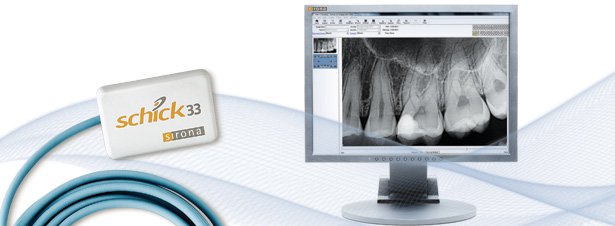
Henry Ford once said: “To see a thing clearly in the mind makes it begin to take form.” Pediatric dentist Dr. Joshua Solomon strongly believes that clear visual images are essential to a parent’s understanding of their children’s dental health.
Prior to digital radiography, Dr. Josh used to identify caries to parents on a traditional film, and parents would typically squint their eyes and nod. He did not think that parents could truly visualize what he was explaining. If parents can’t see something clearly, it can be difficult for them to understand a diagnosis and necessary treatment.
Last year, Pediatric Dentistry and Orthodontics of Livermore implemented Schick 33 digital intraoral sensors in the office. Dr. Josh feels that the image quality has significantly improved and parents are better able to see caries and other dental conditions. With better visualization, parents are more informed and understand the need for dental treatment.
The reason is simple: they can see an X-ray image clearly.
Pictures Tell the Story
Dr. Josh and his staff strive to directly inform parents of the rationale behind radiographs. X-rays on children are not only used to evaluate caries, but also monitor growth and development, evaluate trauma and diagnose pathology. The staff also informs parents on patient safety and how exposure to radiation is dramatically reduced with digital X-rays. With the Schick 33’s high-quality images and enhancement tools, Dr. Josh is able to highlight specific areas on the X-ray to clearly demonstrate caries and other dental diagnoses.
“The more a parent knows, the easier it is for you and your staff to explain treatment and gain parent acceptance,” said Dr. Josh. “Having clear digital images to illustrate our message is invaluable. The image quality of the Schick 33 is phenomenal—parents can see exactly what I’m looking at.”
Seeing is Believing
Dr. Josh uses a dual-monitor system to display radiographs—one inside the imaging room and one outside of the room. The X-ray screen in the patient room gives the kids something to focus on and allows them to immediately see an image. Concurrently, staff can show parents the x-rays and discuss with them outside of the imaging room.
Today, with the Schick 33, parents can see the outline of caries from across the room. Parents have actually said, “I see a little dark spot there – what is that?” The better a parent can see, the more they will accept and understand.
“I can detect caries in children with the Schick 33 faster, better, safer and easier than traditional radiographs. The diagnostic capabilities are unparalleled,” said Dr. Josh. “Today, when I show patients and their parents a digital X-ray, they no longer squint and nod—they get it.”
Share with your colleagues
